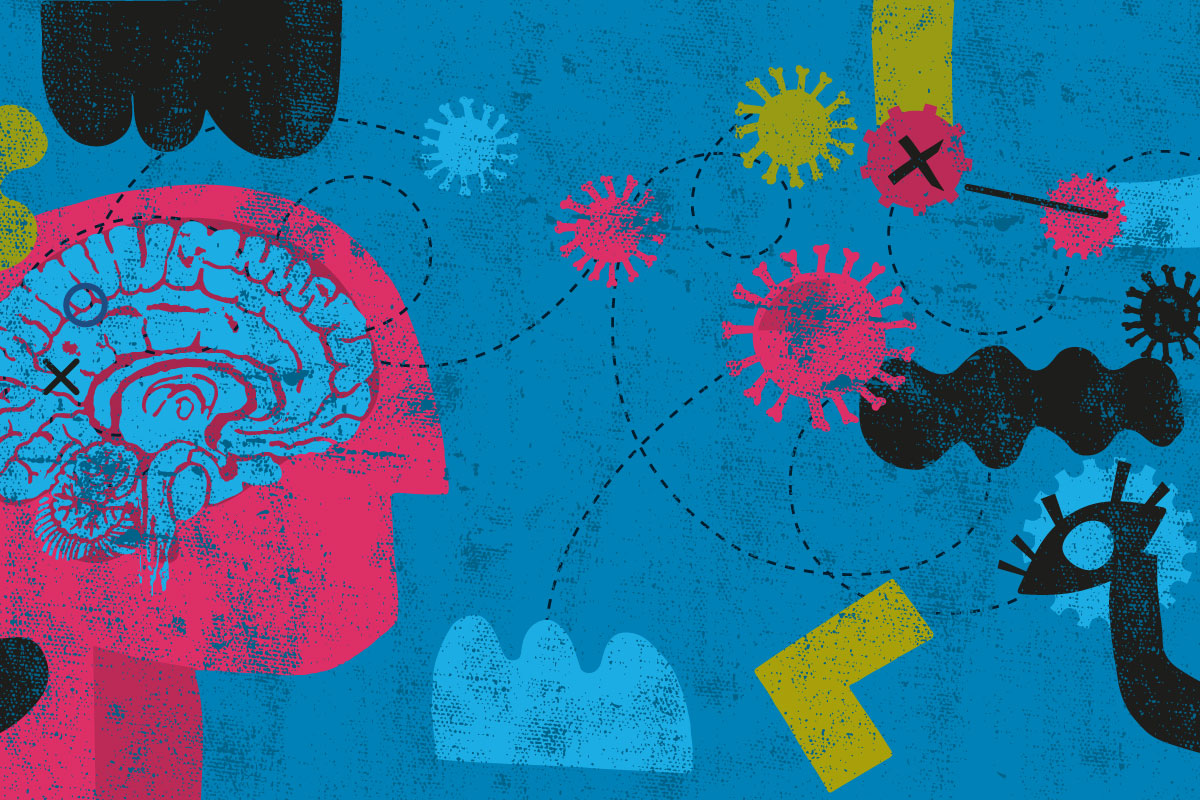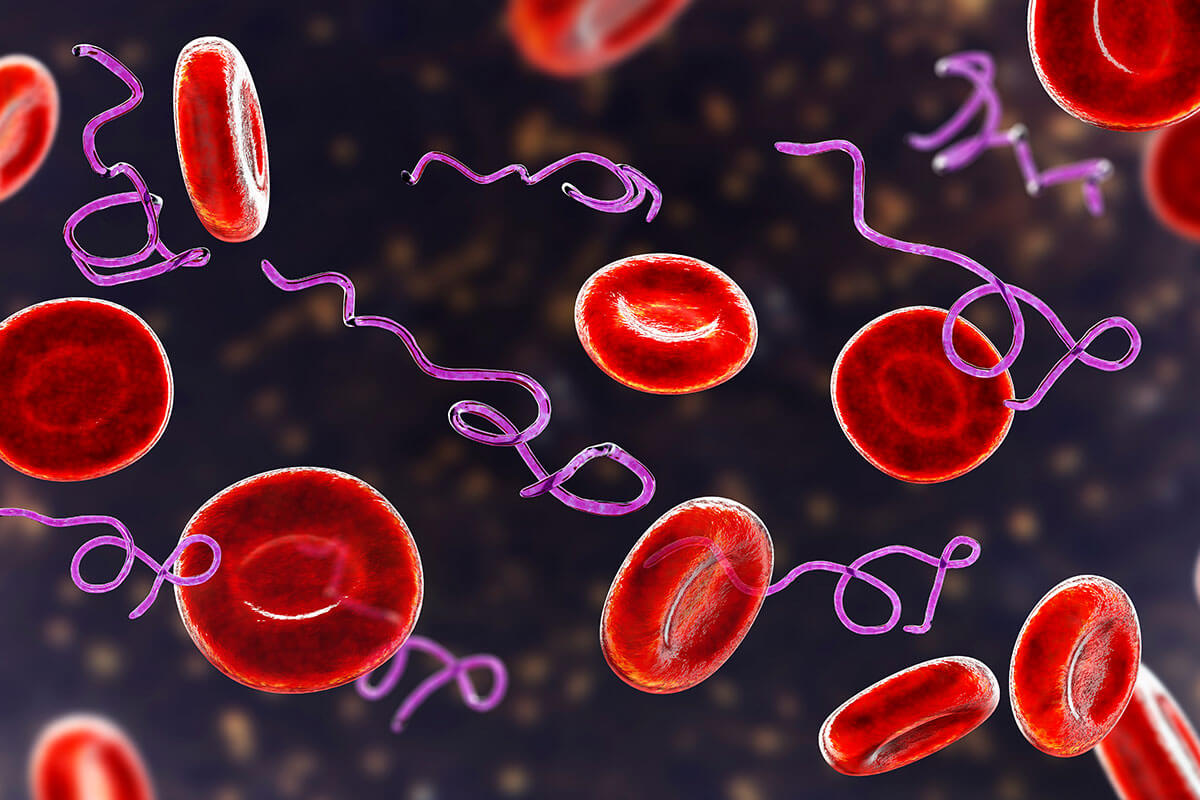Infection with the protozoa Babesia is one of the more common Lyme disease associated infections. In the United States, babesiosis is caused by Babesia microti or Babesia duncani. Historically, infections with B. microti predominantly occurred on the east coast and B. duncani on the west coast. However, with the spread of tickborne infections (especially from tick migration on birds), both species are found throughout the country. Babesia can cause a range of symptoms, however there are unique signs and symptoms associated with babesiosis. The traditional diagnosis and treatment options are inadequate, but recent discoveries have improved upon that.

Like other tickborne infections, babesiosis causes non-specific symptoms such as fevers, headaches, and fatigue contributing to Babesia not being considered as a diagnosis. Babesia is not as well recognized as Lyme disease, so it is rarely recognized as a cause of symptoms. In Lyme disease, symptoms are more severe if someone is also infected with Babesia. Physicians should test for Babesia microti and Babesia duncani in anyone with suspected tickborne infections.
Babesia Transmission to Humans
Babesia is primarily transmitted to humans by a bite from the Ixodes tick. Historically, Babesia microti was thought to only exist on the east coast and Babesia duncani on the west coast, however with the spread of ticks and their hosts, both species can be found on either coast. Babesia duncani is found throughout Canada, and Babesia divergens is most prevalent in Europe.
Transfusion Transmitted Babesiosis
Since Babesia is a parasite that lives inside red blood cells, transfusion-transmitted babesiosis through infected blood supply is well-documented. In this systematic review, the authors looked at 25 articles on transfusion-transmitted babesiosis. 72% of implicated blood donors were asymptomatic at the time of blood donation. The authors concluded it was common for a single donor to infect multiple people through transfusion. If public health organizations and government agencies screened blood supplies for Babesia, transfusion-transmitted babesiosis would be significantly reduced.
Congenital Transmission of Babesia
Transmission of Babesia from mother to child during pregnancy occurred. There are multiple case reports of congenital babesiosis published in medical journals. Like transfusion-transmitted babesiosis, physicians can prevent congenital babesiosis with proper screening of women with known tick bites before pregnancy.
Like malaria, Babesia infects red blood cells in humans and therefore causes comparable symptoms such as fever, headaches, nausea, and anemia.
Babesia Symptoms
The presentation of a Babesia infection can range from being asymptomatic to a severe, debilitating illness. Common symptoms of babesiosis include:
- Headaches
- Fatigue
- Fevers, night sweats
- Shortness of breath, air hunger, cough
- Anxiety, depression, emotional lability
- Nausea, vomiting, low appetite, abdominal pain
- Joint pain, muscle pain
- Vivid dreams
- Enlarged liver and spleen
Babesia Diagnosis
The consideration of Babesia as a diagnosis begins with clinical suspicion. If someone is experiencing chronic fevers, sweats, chills, fatigue, headaches, and shortness of breath, Babesia testing should be performed. General laboratory tests may detect anemia, low platelets, and elevated liver enzymes.
The traditional test performed to diagnose Babesia is looking at a blood smear (commonly a Giemsa stain) under a microscope. This test can be useful in the first couple of weeks of infection when Babesia parasite levels are high in the blood. However, as the infection persists, this test is not sensitive.
In my experience, the detection of antibodies – called Immunofluorescence Assay (IFA) – to Babesia microti and Babesia duncani is the best methodology for diagnosing babesiosis. Physicians should order IgM and IgG antibodies for both Babesia species. The tickborne specialty laboratory Igenex performs the most accurate Babesia IFA.
The Babesia FISH (fluorescence in situ hybridization) test directly visualizes the babesia parasite. A study published in June 2020 found that adding the Igenex Babesia FISH test to their IFA antibody test increased positivity by 12%. If Babesia is suspected and antibody results are negative, consider adding the Igenex Babesia FISH test.
Babesia Treatment
Since Babesia is a malaria-like parasite, the conventional treatment recommendation is combining the antimalarial drug atavaquone (mepron) with azithromycin for 7-10 days. This regimen may be sufficient in early acute babesiosis but is often not effective in a persistent Babesia infection.
A 2018 study tested the four most common medications used to treat Babesia. Researchers tested the effectiveness of atovaquone, azithromycin, clindamycin, and quinine on a culture of Babesia duncani. They concluded Babesia had low susceptibility (not effected) to the standard treatments that are currently recommended. Additionally, these medications are associated with significant side effects.
Essential Oils for Babesia Treatment
With a need for better Babesia treatments, researchers from Johns Hopkins University were tasked with finding effective therapies and had few side effects. The researchers had previously conducted screening studies of essential oils to treat stationary (persister) phase Lyme disease and Bartonella. In 2020, Dr. Zhang and his team identified essential oils with high activity against Babesia duncani. They screened 97 essential oils and identified ten that were effective against Babesia and further narrowed their search to the two most effective compounds – garlic oil and black pepper oil.
The researchers also discovered one active compound from garlic called diallyl disulfide (DADS) and one from black pepper oil called beta-caryophyllene (BCP) had high activity against Babesia duncani. Clove, oregano, and rosemary oils also contain BCP. People wanting to use essential oils should use caution with oral ingestion. My preference is a liposomal essential oil formula in capsules.
Herbal Treatment of Babesia
A variety of herbs and herbal formulas are also useful in treating babesiosis. There is evidence turmeric inhibits Babesia growth and has anti-babesia activity. I routinely prescribe herbal tinctures formulated by the companies Byron White and Beyond Balance. The herbalists created herbal formulas that are anti-babesial, stimulate the immune system, reduce inflammation, and tonify the blood.
The author and herbalist Stephen Buhner recommends an assortment of herbs, including Crytolepis, Sida acuta, and Artemesia. In his book Natural Treatments for Lyme Coinfections, Buhner emphasizes many herbs are effective against Babesia, and no one protocol works for everyone.
Babesia Makes Lyme Disease Worse
A co-infection with Babesia causes Lyme disease symptoms to be worse. The hallmark signs and symptoms of babesiosis are fevers, night sweats, air hunger, vivid dreams, headaches, and nausea. Advances in diagnostic methods have improved the diagnosis of chronic Babesia, and the discovery of natural compounds that are effective against persistent Babesia has improved treatment outcomes. If you have been diagnosed with Lyme disease, it is essential to test for Babesia to improve treatment success.



